Improving Our Understanding of Seabird Behaviour at Sea
This project collated tracking data from five seabird species thought to be vulnerable to offshore wind farms. These data were analysed to understand whether seabird distribution data, usually undertaken in daytime, good weather conditions, were representative of behaviour in other conditions.
This document is part of a collection
7.7 Appendix AG: Relationships between transition probability and additional variables of colony distance and Julian date
7.7.1 Northern Gannet
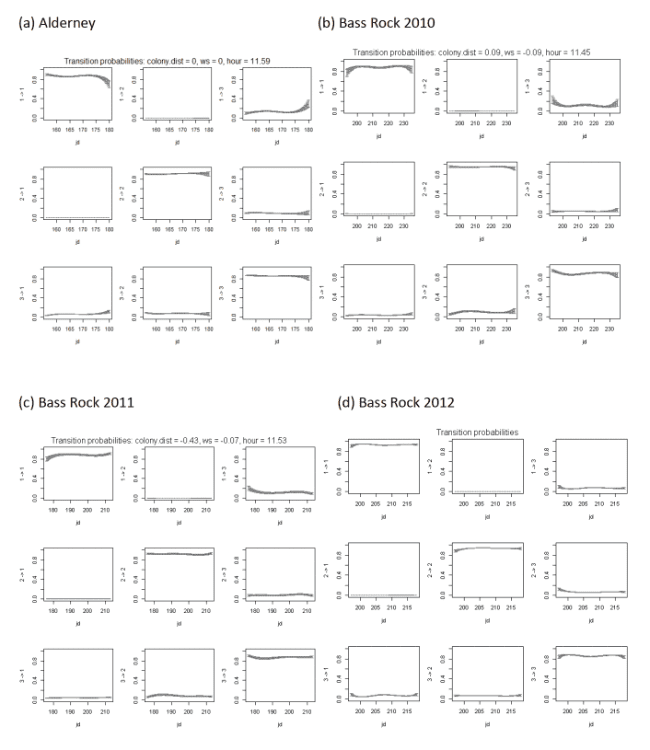
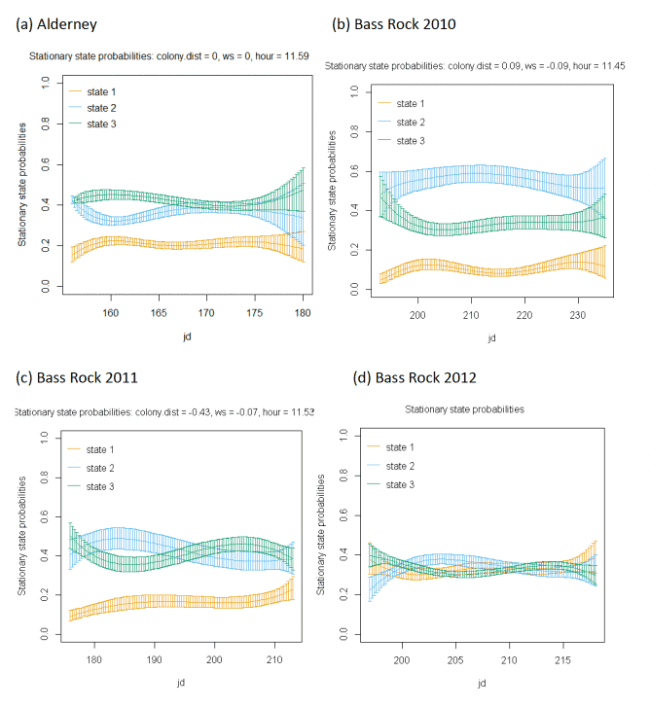
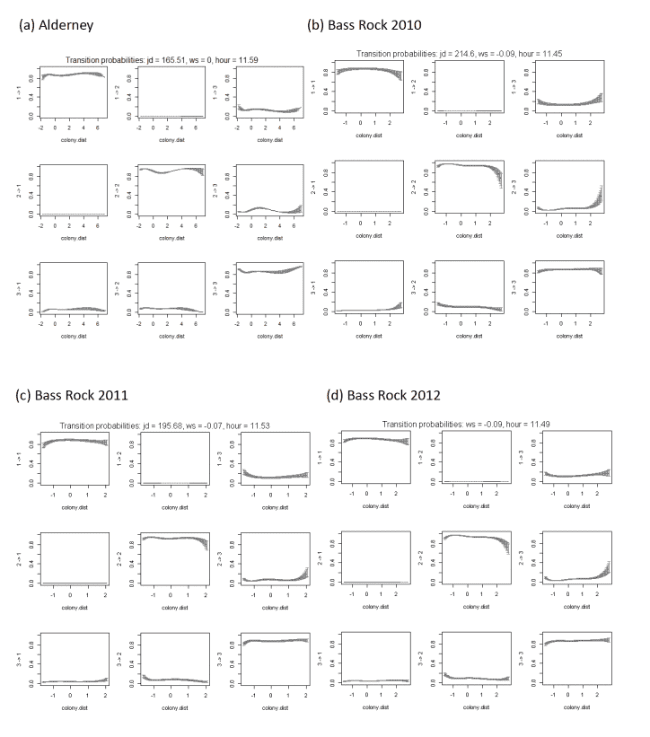
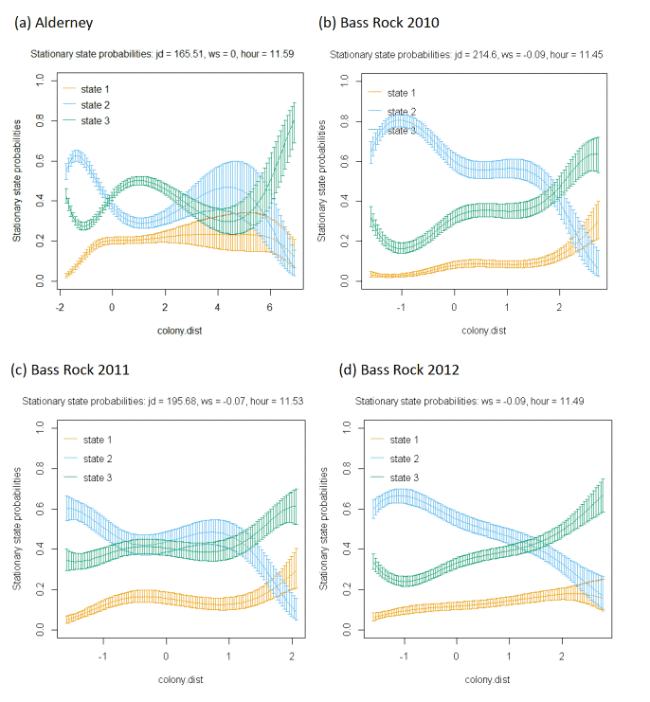
7.7.2 Lesser Black-backed Gull
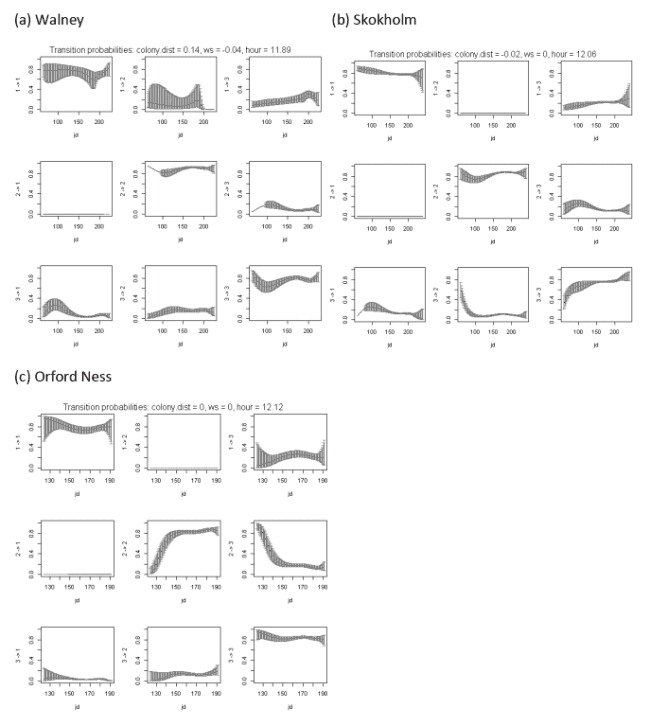
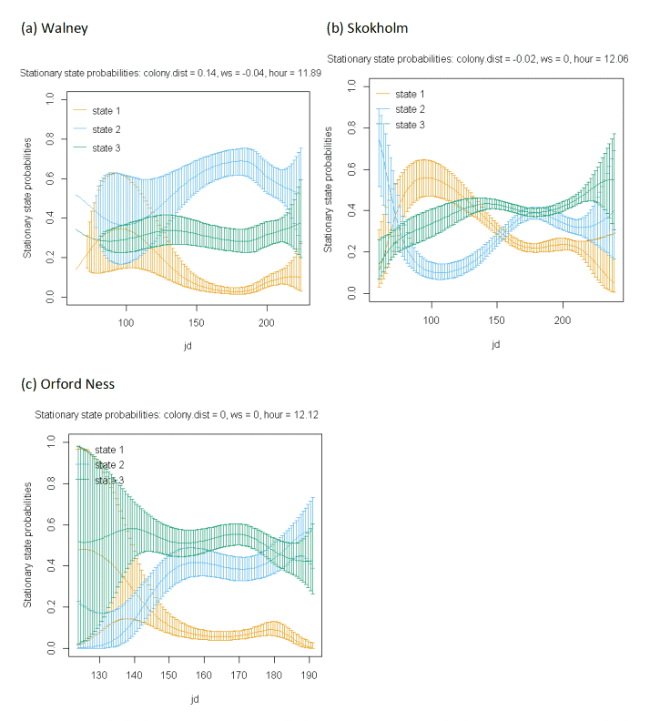
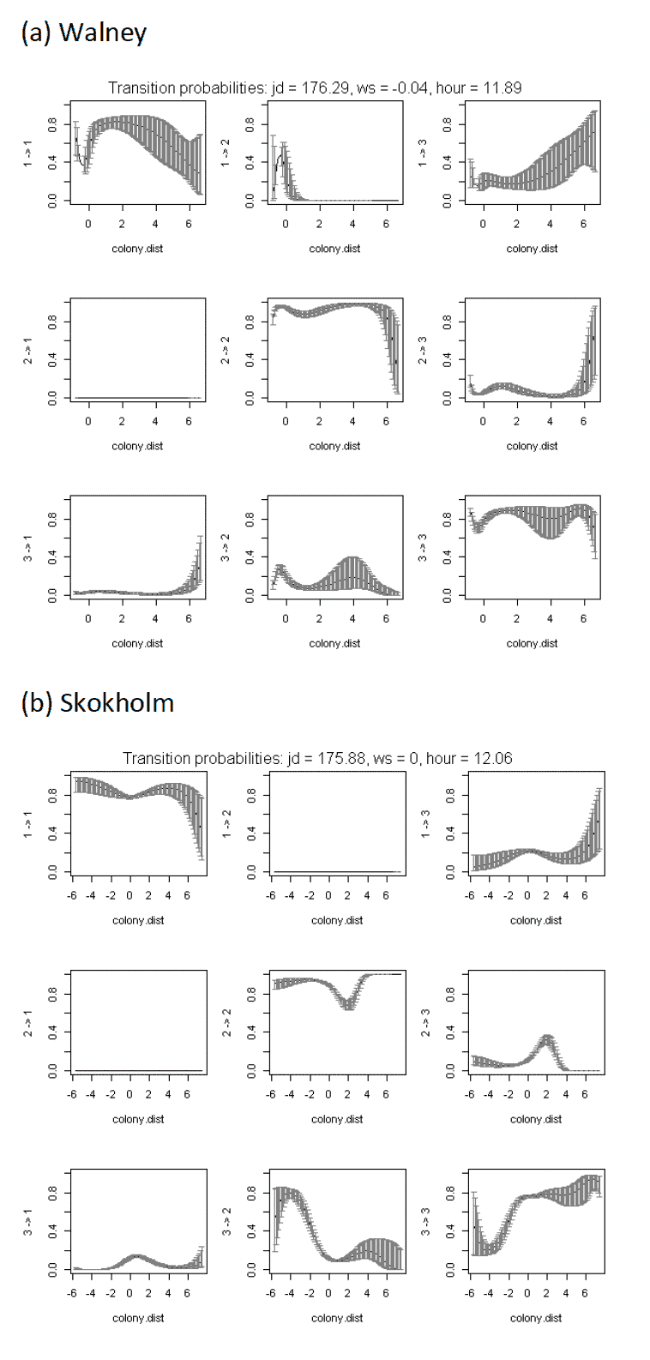
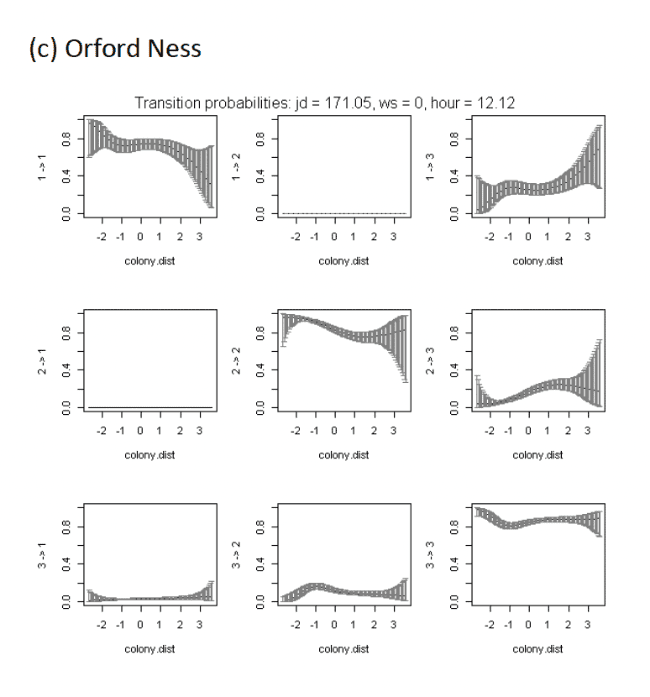
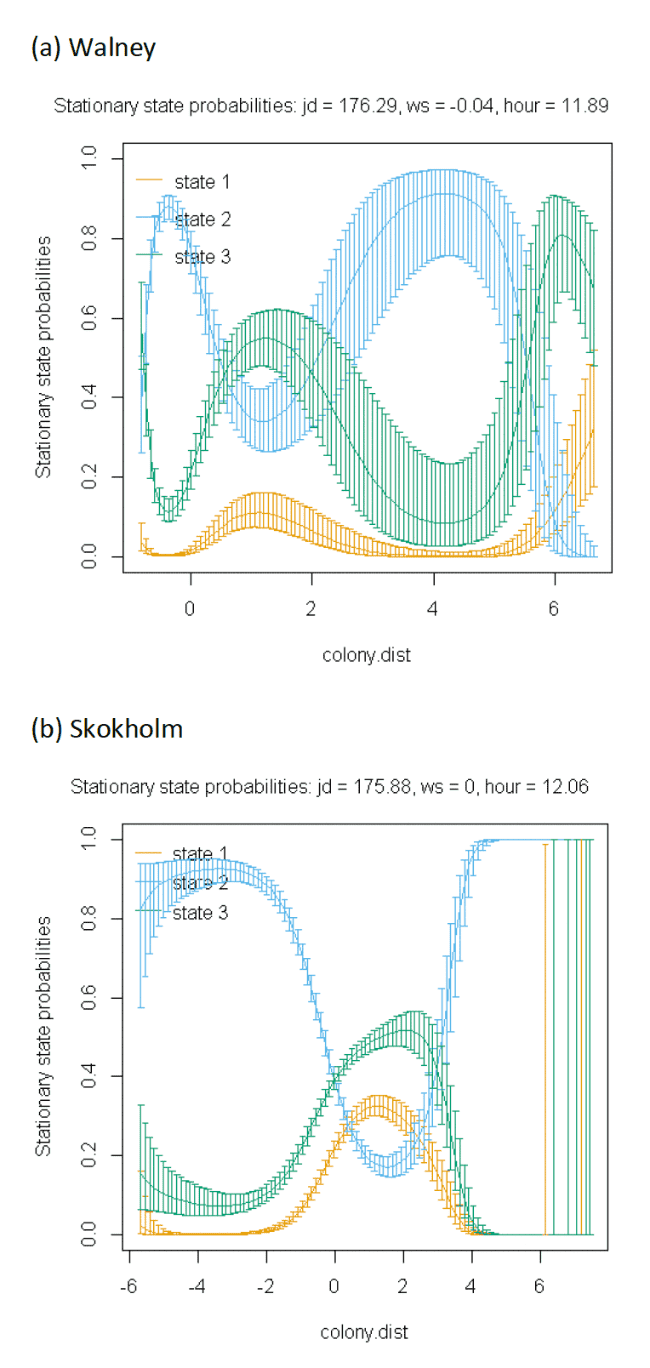
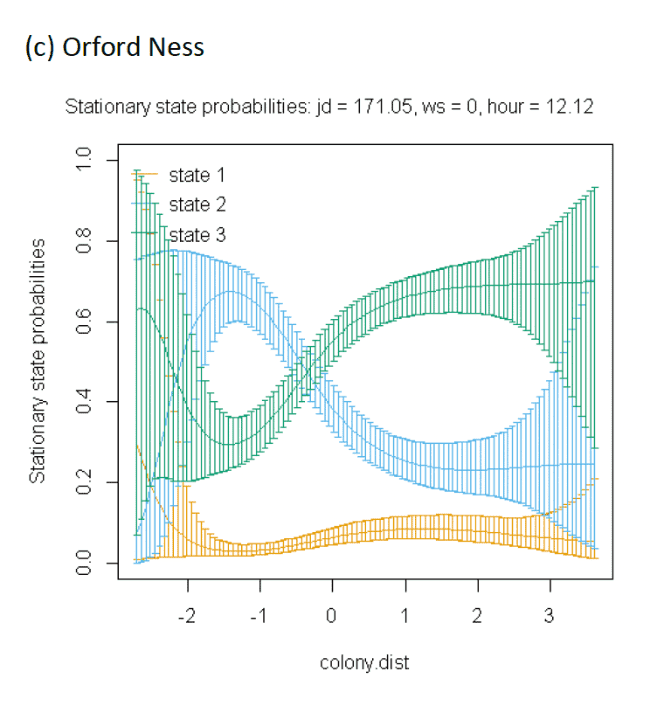
7.7.3 Black-legged Kittiwake
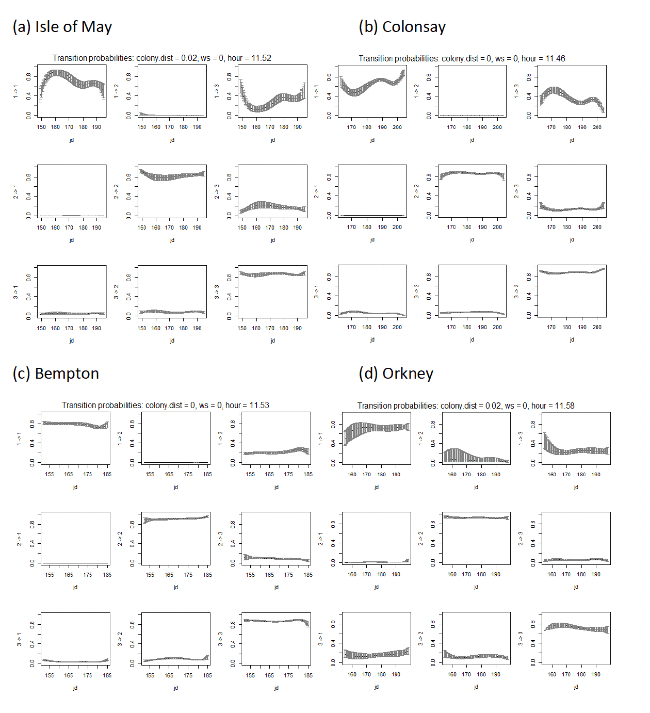
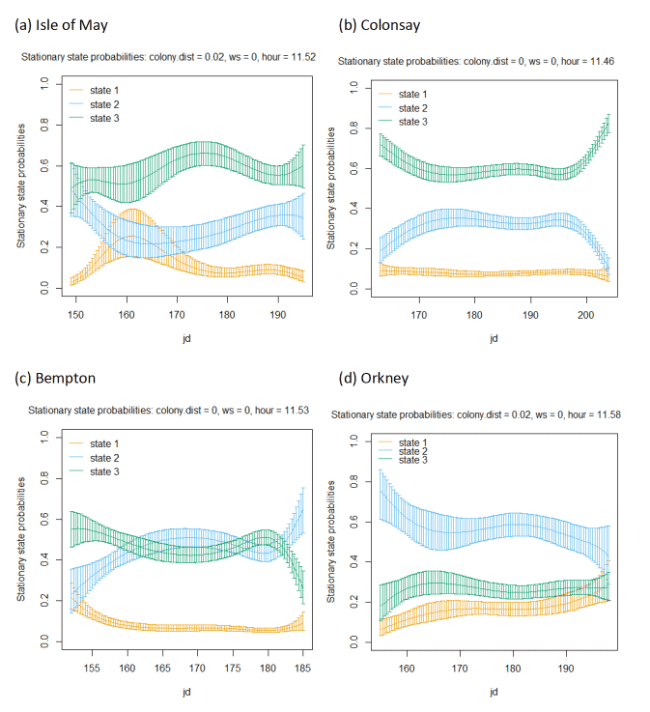
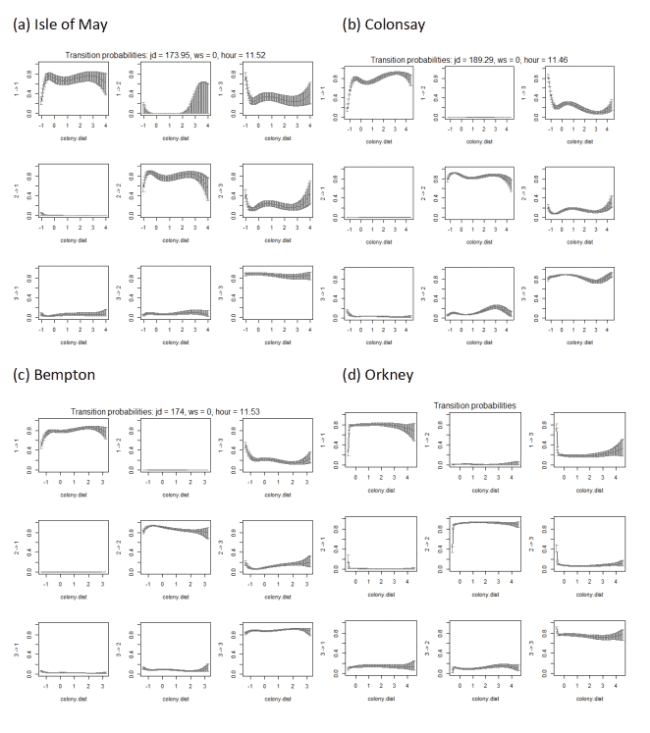
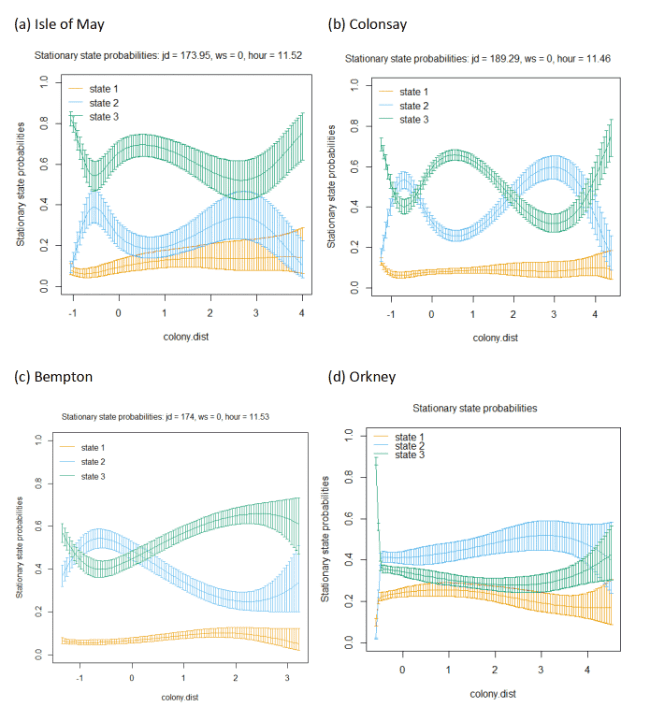
Contact
Email: ScotMER@gov.scot
There is a problem
Thanks for your feedback